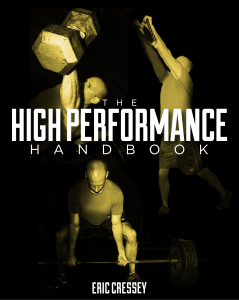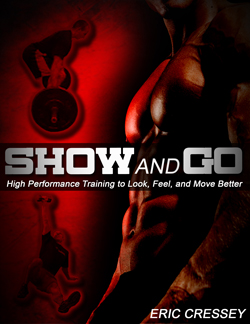 Today’s guest post comes from Evan Osar. Evan has spent over 1,000 hours refining an approach to corrective exercise and has compiled it in a program he calls the Integrative Corrective Exercise Approach. Evan and the producers at Fitness Revolution have agreed to offer my readers a special discount of $100 off this week only. More on his program at the bottom of the post.
Today’s guest post comes from Evan Osar. Evan has spent over 1,000 hours refining an approach to corrective exercise and has compiled it in a program he calls the Integrative Corrective Exercise Approach. Evan and the producers at Fitness Revolution have agreed to offer my readers a special discount of $100 off this week only. More on his program at the bottom of the post.
The Functional Assessment
While there are any number of valid assessments that can be used, we must make our choice based on the type of information the assessment provides. For example, when assessing for common shoulder and hip dysfunctions one must look at the biggest causes of loss of optimal breathing and trunk stabilization, inability to maintain joint centration with subsequent loss of internal rotation in both the shoulders and hips, and poor loading strategies through the shoulder complex, trunk, and hip complex. (Evan is describing what my course attendees have heard me describe as “common things happen commonly.)
The purpose of an assessment is not to test the client for an entire hour, running them through a battery of tests to discover every single movement fault. The goal of the assessment is to help the rehabilitation or performance professional to determine the biggest driver of the client’s dysfunction. In other words, what is the greatest movement or stabilization dysfunction that is causing this individual’s dysfunction. While there can be several causes, one is likely to be the primary, while the others are likely to be secondary compensatory problems.
After performing a thorough assessment, what if the rehabilitation or performance professional chooses the wrong primary driver and chooses a corrective exercise approach based on this faulty premise? The worst case scenario is that the client does not improve, while the best case scenario is that the client improves a little, which for some clients will be all they need to resume their activities or accomplish their functional goals. Unfortunately, this strategy will not help many chronic pain sufferers or elite athletes, the two groups of individuals at the extreme ends of the functional continuum. These individuals will need a specific approach to improving their performance, which is why the tests and evaluations must be precisely administered and their results efficaciously interpreted to determine the priority of the intervention.
At times, despite our best intentions, an incorrect corrective approach may be administered. While corrective strategies can take weeks, months, or even years depending upon the severity, complexity, or intensity of the presenting issues, if the chosen approach is not demonstrating any functional progress within two weeks, it is likely not the correct approach or perhaps not the appropriate time for that part of the intervention, provided the rehabilitation or performance professional is confident that the client is doing their part in the process by performing their homework. Therefore, a new approach should be instituted and reassessed for its efficacy within the next two weeks following the introduction of the new strategy.
Learn Evan’s Integrative Corrective Program
I am really excited to share that Evan and our friends at Fitness Revolution have offered my readers a special $100 off Evan’s new program, The Integrative Corrective Exercise Approach. In this great program, Evan shares his proven system to help you assess postural and movement problems and develop a corrective exercise strategy.
The program is $100 off for my readers this week only! The offer ends Friday March 18th at midnight!
Click here to save $100 off Evan Osar’s Corrective Exercise System



Follow Joe